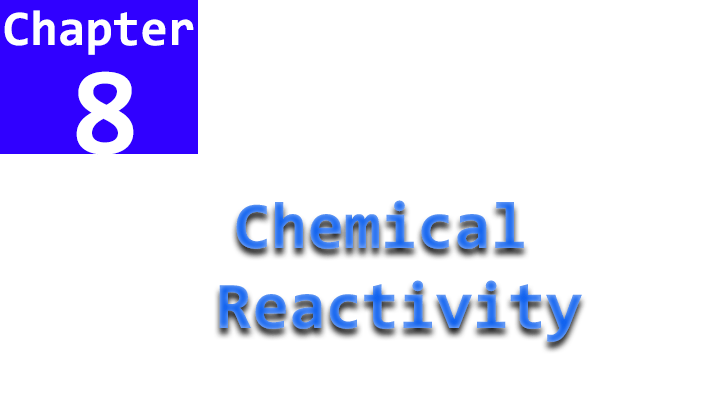9th Class Chemistry Chapter No. 8 Chemical Reactivity Notes
The last unit that is Chapter No. 8 of the 9th Chemistry is chemical reactivity. Different materials around us exist in various forms, and they can be categorized into metals and non-metals. Metals are electropositive elements (except hydrogen) that form cations by losing electrons. They possess several physical and chemical properties. Physical characteristics of metals include being solids (except mercury), having high melting and boiling points (except alkali metals), possessing metallic luster, malleability, ductility, and good conductivity of heat and electricity. They also have high densities and are hard (except sodium and potassium).
Chemical properties of metals include the ease of losing electrons to form positive ions, the formation of basic oxides when they react with oxygen, and the tendency to form ionic compounds with non-metals due to metallic bonding. The electropositive character of metals refers to their tendency to lose valence electrons and form positive ions. It increases down a group and decreases across a period in the periodic table.
Short Answer Questions
Alkali metals are very reactive as they have the lowest ionization energies in their respective periods and the largest atomic size. They have a valency of 1. Alkaline earth metals are also reactive, but less than alkali metals, due to higher ionization energies and smaller atomic sizes. They have a valency of 2. Metals have a wide range of applications, and some common metals include aluminum, platinum, iron, cesium, uranium, lithium, osmium, and lead. Alkali metals are highly reactive, while alkaline earth metals are relatively less reactive.
Comparison of Reactivities of Alkali and Alkaline Earth Metals
Alkali metals are located in Group 1 of the periodic table, and alkaline earth metals are located in Group 2. Alkali metals are extremely reactive due to their ns1 valence shell configuration, while alkaline earth metals are also reactive but less so because of their ns2 configuration. Alkali metals have one valence electron and readily form cations with +1 oxidation state, whereas alkaline earth metals have two valence electrons and form cations with +2 oxidation state. Alkali metals have lower ionization energies and larger atomic sizes compared to alkaline earth metals, making them more electropositive and reactive.
Alkali metals react vigorously with water, whereas alkaline earth metals have a slower reaction with water and generally require heat to react.
Both alkali and alkaline earth metals readily form salts with non-metals due to their reactivity. Metals are essential in our everyday lives and have numerous applications in various industries due to their unique physical and chemical properties.
Long Question Answers
Uses of Sodium
- Sodium-potassium alloy is used as a coolant in nuclear reactors: Sodium-potassium alloy, also known as NaK, is used as a coolant in nuclear reactors due to its excellent heat transfer properties. It has a low melting point and good thermal conductivity, making it effective in carrying away heat from the reactor core.
- It is used to produce yellow light in sodium vapor lamps: Sodium vapor lamps are a type of streetlights and other outdoor lighting sources that produce yellow light. They work by passing an electric current through a mixture of neon and argon gases along with a small amount of metallic sodium. When the lamp is switched on, the sodium vaporizes and emits a bright yellow light.
- It is used as a reducing agent in the extraction of metals like Ti: Sodium is used as a reducing agent in the extraction of certain metals like titanium (Ti). In the Kroll process, titanium tetrachloride is reduced with sodium to obtain metallic titanium.
Uses of Magnesium
- Magnesium is used in flash light bulbs and in fireworks: Magnesium is commonly used in flash photography bulbs and fireworks to produce a bright, intense white light when ignited. The combustion of magnesium releases a large amount of heat and light, making it suitable for these applications.
- It is used in the manufacture of light alloys: Magnesium is alloyed with other metals, such as aluminum and zinc, to create lightweight and strong alloys. These alloys are used in various industries, including aerospace, automotive, and construction, where lightweight materials are desirable.
- Magnesium ribbon is used in the Thermite process to ignite aluminum powder: In the Thermite process, a mixture of powdered aluminum and metal oxide (usually iron oxide) is ignited by burning magnesium ribbon. The intense heat produced by the Thermite reaction can be used for welding and metal cutting.
- Magnesium is used as an anode for the prevention of corrosion: Magnesium metal is employed as a sacrificial anode to protect other metals, such as steel, from corrosion. When magnesium is connected to the metal to be protected, it undergoes corrosion instead of the protected metal, thereby preserving the integrity of the structure.
Uses of Calcium
- It is used to remove sulfur from petroleum products: Calcium compounds, such as calcium oxide (quicklime) and calcium hydroxide (slaked lime), are used to remove sulfur impurities from petroleum products during refining processes. These calcium compounds react with sulfur-containing compounds to form non-volatile calcium sulfides, which can be easily removed.
- It is used as a reducing agent to produce Cr, U, and Zr: Calcium is used as a reducing agent in the production of various metals, including chromium (Cr), uranium (U), and zirconium (Zr). It reacts with metal oxides to extract the respective metals in various industrial processes.

